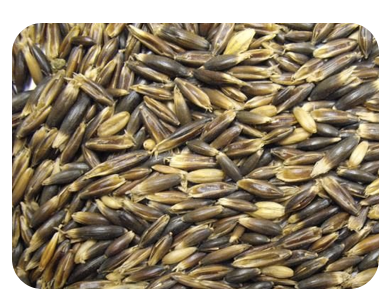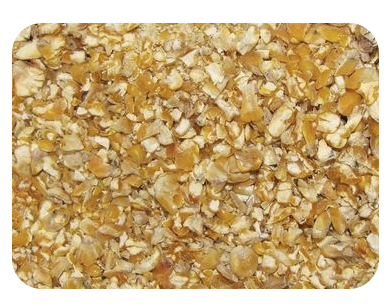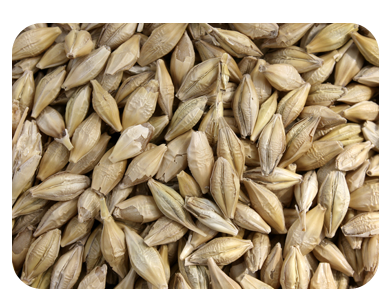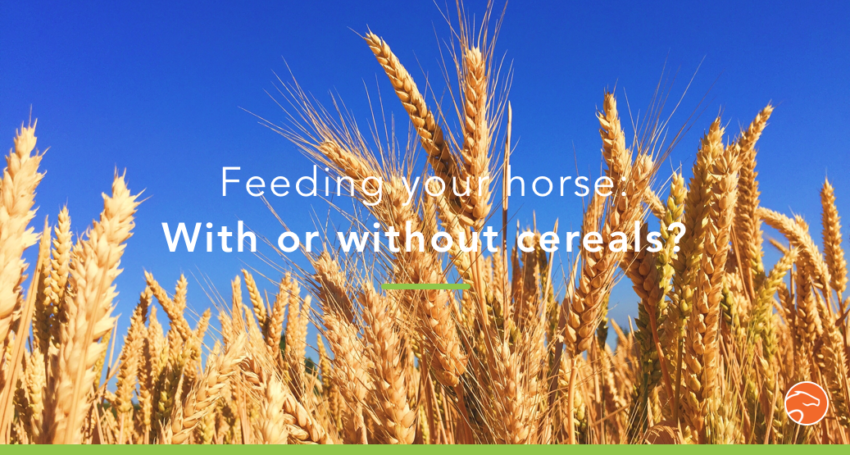
“Cereal Free” Feed: Dietarily Interesting or Marketing move?
Cereals have a bad reputation these days! A lot of people say they are ill-adjusted for the horse’s digestive system, and some even speak of allergies. Through time, they have showed their nutritional value for the modern horse’s feeding (if used correctly) but nowadays this “back to the roots” movement is what society expects, even in the domain of horse feeding. This new wave of cereal free feeds on the market answers this huge demand from the consumers. But do we really gain something from feeding cereal free, from a dietary point of view? Let’s find out.
📚 Read more: 6 things to know about sweet itch
Table des matières
How did cereals end up in the feeders? 🐴
When horses were domesticated and started being used for war or farming (before horses began to be used for sports), men were forced to use cereals for the feeding. Indeed, the available amount of forage (especially in fenced pastures) wasn’t enough to fulfill the needs of the horses doing physical work for men. Furthermore, it’s quicker for them to eat cereals than hay, and it was important to reduce the time the horses spent eating to work more. So, of course, humans turned to cereals, more concentrated in energy than forages, and this despite their disadvantages. 😕
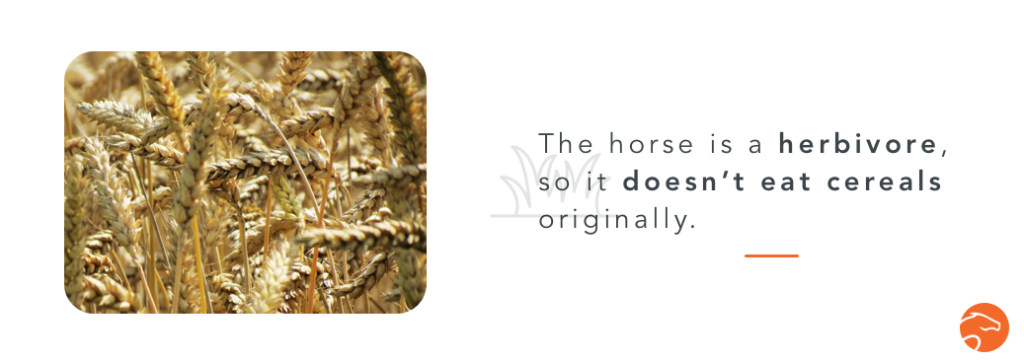
Cereals, you are guilty of… 👉
#1- Too much starch
The major disadvantage of cereals, which is also the reason it is so palatable for horses, is their high starch levels. Starch is a complex sugar (the same you find in pasta or rice). And too much starch favors diseases like gastric ulcers, digestive colics, laminitis and also favors diseases like myositis or metabolic diseases (Cushing, Equine Metabolic syndrome). That’s quite a lot!
Oats Corn Barley
Oats, corn and barley: 3 feeds rich in starch
#2- Lack of proteins
Cereals have pretty low protein levels and their feeding efficiency is moderate. Both of these are essential for tissue synthesis.
#3- Imbalance of the essential fatty acids
Cereals are too rich in omega-6 in comparison with/to omega-3, which directs the fatty acids to be stored and not to be used as energy.
#4- Nutritional deficiencies and micronutrients imbalance
Cereals are really unbalanced from a micronutrient (minerals, oligoelements and vitamins) point of view. For instance, they are innately poor sources of calcium and high sources of phosphate (unsettling the balance between calcium and phosphate), which isn’t great for the horse’s bones and joints. Their vitamin levels also drop quickly when stored.
#5- Allergies (reality or misinformation?)
Cereal feeding allegedly causes allergies. It’s important to note that even if we don’t exactly know the number of allergic equines, we estimate that this number is fairly low. Furthermore, studies show that the reliability of blood tests for food allergies on the market is questionable [1]. Nothing can prove for certain today that cereals present a high allergy risk for horses.
You’re probably thinking that this is a lot. And you’d be right! Using cereals incorrectly impacts the horse’s health and using them on their own isn’t enough. But should we completely erase them from our horse’s feeders?
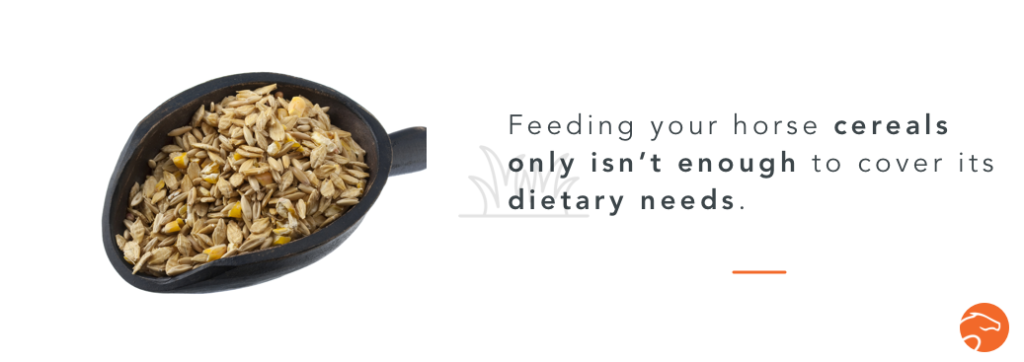
The “cereal free” label, a real catch-all 🍲
To answer this question, let’s see what’s hiding behind this name.
Firstly, it isn’t a “regulated” label. So the only common thread between these feeds is… (you’d never guess it 😏) that they don’t contain cereals.
And even this can get you confused: depending on the products, we can find corn, or oats: what this term encompasses seems pretty vague… By the way, there are a lot of different feeds on the market:
- Flakes of hay or alfalfa pellets: these are actually forages transformed into feed. It’s kind of like someone wrote “vegetarian product” on a can of vegetable soup. Let’s keep in mind that a horse will like chewing on long fibers (hay or other fibers), for its digestive hygiene and its mental comfort.
- Forage rectifiers: in this case, the naming is misleading… It’s actually the equivalent of a mineral and vitamin supplement (MVS) made for horses whose need for energy and proteins are covered by forages (grass and/or hay). The name/label “cereal free MVS” would be more appropriate since this is a mineral feed (there are some MVS with a cereal base). These feeds are rich in vitamins and oligoelements: it’s important to stick to the recommended doses to avoid intoxications.
- The “real” cereal free feeds: unlike the two others, these are real feed, strictly speaking. They offer little energy and are often recommended for sick horses (metabolic troubles mostly).
The energetic efficiency of a feed 🔥
Let’s imagine a case where the energetic needs of your horse aren’t covered by the hay given to it. The feed you give your horse has to have the right energetic efficiency. And there are 3 ways to bring energy to a horse: carbohydrates (“starch and sugars”), lipids (“fats”) and fibers (cellulose). These 3 energy sources aren’t equal, but rather complementary:
- Carbohydrate energy: Quickly and efficiently assimilated, it fuels short and intense efforts.
- Lipidic energy: Well assimilated by the horse, it is less available for the body. It’s the energy of long and repeated efforts.
- Fiber energy: Slowly released, it’s the preferred source for middle-length efforts. It has the disadvantage of being a lot less energetic kilo wise than starch (it’s not concentrated enough for intense efforts).
If we want to create a real cereal free feed without cereals (and I’m not talking about flakes of hay or cereal free MVS) with the density of a “classic” feed, we have to substitute the carbohydrate energy (without cereals, less starch) with lipidic energy and fibers.
Approximately, we divide the carbohydrates by half, increase the lipids and use the fibers as the dilution factor to add some volume (and get the same density). If we do this, we can get quite the “energetic level”, but with less carbohydrates we drastically lower the fuel for short efforts. This is great for horses with a small workload, but not for horses with a more important one.
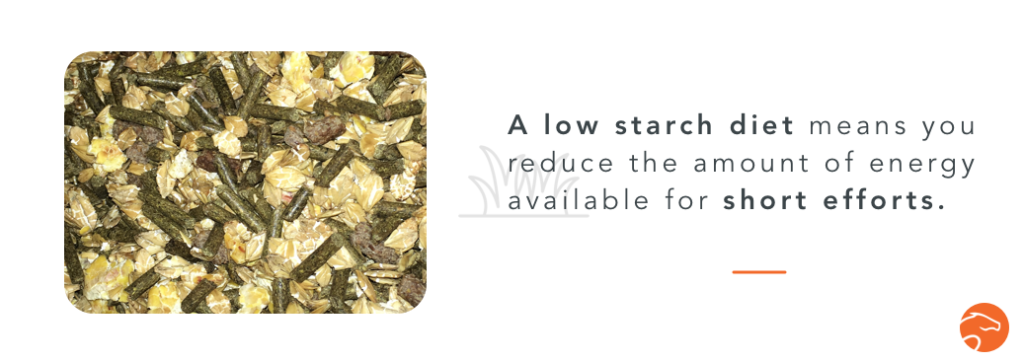
📚 Learn more: Here’s how to find the perfect stables
Your motivations are key to this reflection
Let’s look at the motivations which could make you want to give a cereal free feed rather than a classic feed.
#1- I want a feed with less starch
To avoid the risks linked the the pathologies I talked about earlier, you want to reduce the amount of starch in your horse’s feed. Cereal free feeds have low starch and sugar levels (around 8 to 10%) so they answer/meet this need.
However, as we saw above: no muscle activity without carbohydrates energy and no carbohydrates energy without starch… These feeds can’t provide enough energy for a sport horse.
⏩ What to do then in order to lower the starch levels if your horse exercises a lot? 🧐
It’s important to not think about the starch percentage in food, but it’s global quantity in the feed. The only really interesting data is the starch quantity per day and per meal! It has been shown that a daily starch intake inferior to 2g per live weight kilo (so 1000g/day for a 500kg horse) and inferior to 1g per live weight kilo each meal considerably reduces the risks of a starch induced disease occurring [2]. If your horse is particularly affected by starch induced pathologies, you can even divide this by half! Sticking with this recommendation is entirely possible with most “classic” feeds available on the market.
To decrease the risks of a pathologie linked to cereals, the horse needs to eat:
✅ less than 2 g of starch / live weight kg / day
✅ les than 1 g of starch / live weight kg / meal
#2- I want a “light” feed
This term is ambiguous: what do you want your feed to be light in? Sugars, fats, energy? We saw with the previous example that, if we remove the carbohydrates, you have to replace them with something else. To put it differently, we replaced the amount of pasta with a double portion of fresh cream… I’m not sure this is really a “light” feed. But this is indeed a “sugar light” feed.
⚠️ “Sugar light” can be richer in lipids! It’s like “dividing by half the pasta and double the fresh cream”
Other issue with “light” feeds: we have the bad habit of giving more of it! To lighten a feed energy wise, the best way is to reduce the amount of feed you give. In the case of an important reduction, to avoid micronutrient deficiencies, it can be good to change to a feed less concentrated in energy but which can guarantee adjusted mineral, vitamin and oligoelement intake.
#3- I want a natural feed 🍎🥕
You want to go back to a more “natural” feed for your horse. Let’s see what ingredients are contained in the “cereal free” feeds:
- Fibers to bring volume to the food (same density as “classic” food): dry grass for instance, or alfalfa, beet pulp.
- Fats, in the shape of oils or oilseeds. Flax is recommended because of its great omega-6/omega-3 ratio.
- Proteins: protein crops and oil cakes are useful. Soya is particularly interesting because it brings both lipids and proteins.
- Additives: mineral supplements (phosphate, salt for instance), oligoelements and vitamins; yeasts.
- A few natural “seasonings” for dietary diversity: apples and carrots (as crisps, it’s more chic), grape seeds, aromatic herbs, garlic, Jerusalem artichokes, flower extracts…
In all of this, not a lot is part of the “natural” feed of a horse 😕. You also should know these ingredients often end up in “classic” feeds as well. Let’s not forget the only natural feed for the horse, it’s to eat grass 15 hours a day… 🌱
📚 On the same topic: How to avoid the traps of horse feed labels
To conclude:
It’s true that cereals used on their own as a supplement to forage cannot constitute a balanced meal. But we can make them interesting by incorporating them in precise proportions and associating them with other raw materials and supplements. This feed elaboration requires sharp knowledge of the nutritional profile of each raw material.
Cereal free feeds? Why not. ⚠️ But “true” cereal free feeds ⚠️ (let’s forget disguised “MVS” and hay pellets). And only in some cases:
- horses with a small workload
- horses allergic to cereals (even if it’s rare)
- horses with metabolic issues
Hay pellets can be useful if you’re having a hard time with your hay supply, for an older horse having a hard time chewing, or a recovering horse finding it difficult to re-feed.
The important thing is for you to be curious and use your critical thinking to distinguish marketing and real nutritional interest.
Marine Slove,
Veterinary and Destrier nutritionist
Bibliography
[1] Dupont, S. et al. (2014) “A commercially available immunoglobulin E-based test for food allergy gives inconsistent results in healthy ponies”, Equine Vet. J.
[2] Luthersson et al. (2009) “Risk factors associated with equine gastric ulceration syndrome in 201 horses in Denmark”, Equine Vet. J., 41 (7), 625-630
Images
Cover picture: Photo by Melissa Askew on Unsplash
